Neshan 46/47
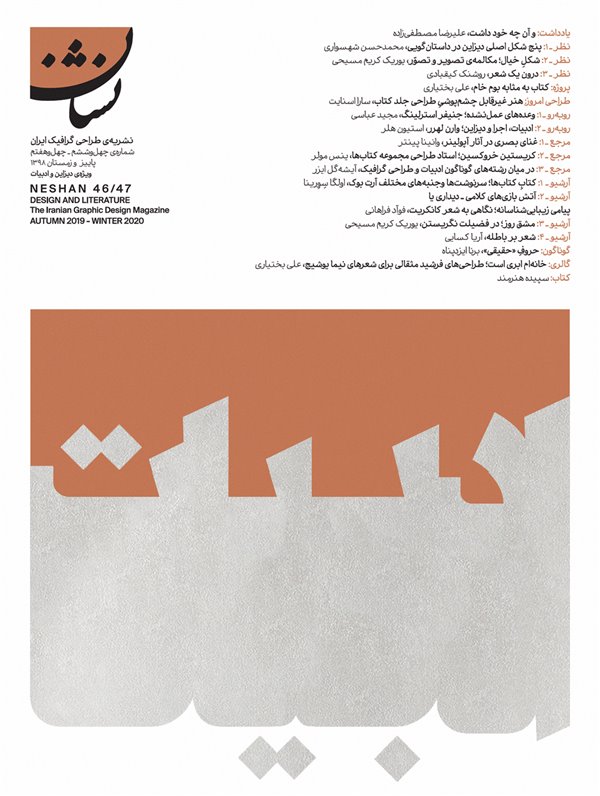
Project
Book as a Blank Canvas
Ali Bakhtiari
“I believe artist handbooks are getting more and more important. Nowadays, information is more short-lived than ever”. – Franz König
This essay discussed how artist handbooks came to existence in Iran and it is not a report about the present time.
n practice, artist handbooks as a modern art medium become what they are now after book production was industrialized. In Iran, books were mass-produced from lithography and movable type era, and the tradition of bookmaking and Muraqqa was for the court and nobles, however, this tradition cannot be considered to be artist handbook which is a book as an art medium. For the reason that, it is the conceptual approach of the artist/author in selecting his medium that makes a book artistic. The term “Bookness” was added to the lexicon of contemporary art in the 1970s, it represents the physical and conceptual attributes of books as an art medium like painting, sculpture or video. As a result, how a book is categorized as an artist handbook depends on how it was produced.
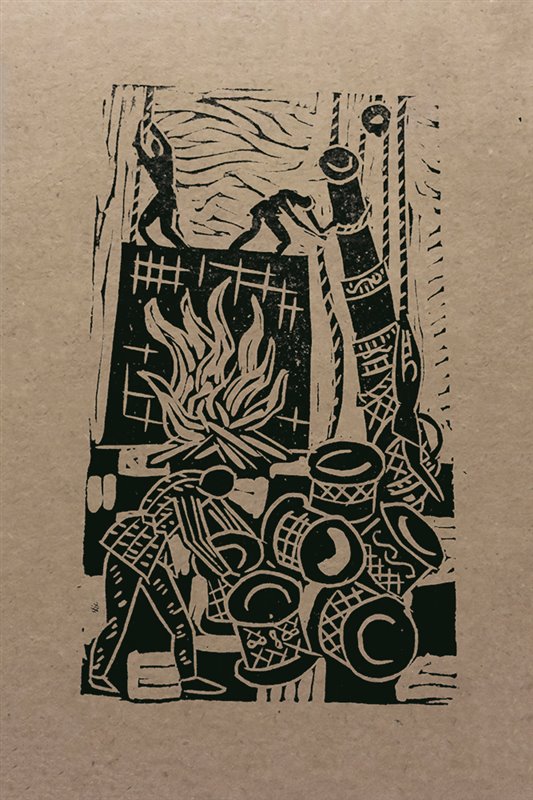 Bahman Mohasses, By the Pen, written by Jalal Al-e-Ahmad, 1961
Bahman Mohasses, By the Pen, written by Jalal Al-e-Ahmad, 1961
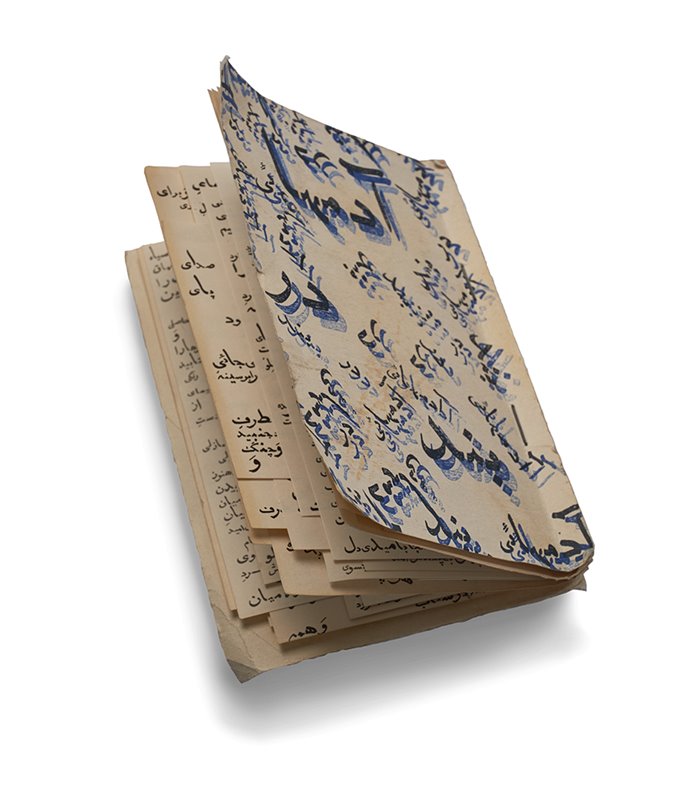 Amir Gol Ara, Those in Chain (Adamhayee dar band), 1961
Amir Gol Ara, Those in Chain (Adamhayee dar band), 1961
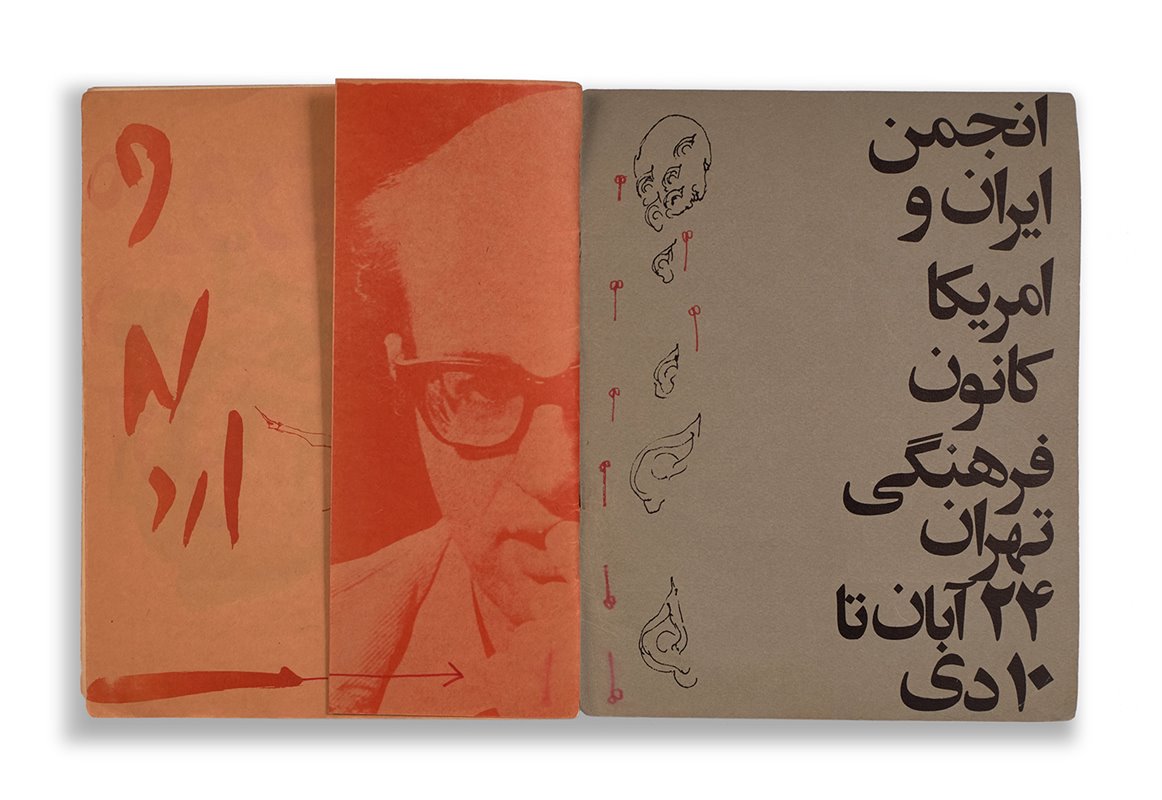 Ardeshir Mohasses, Drawing on Exhibition Catalog, 1970s
Ardeshir Mohasses, Drawing on Exhibition Catalog, 1970s
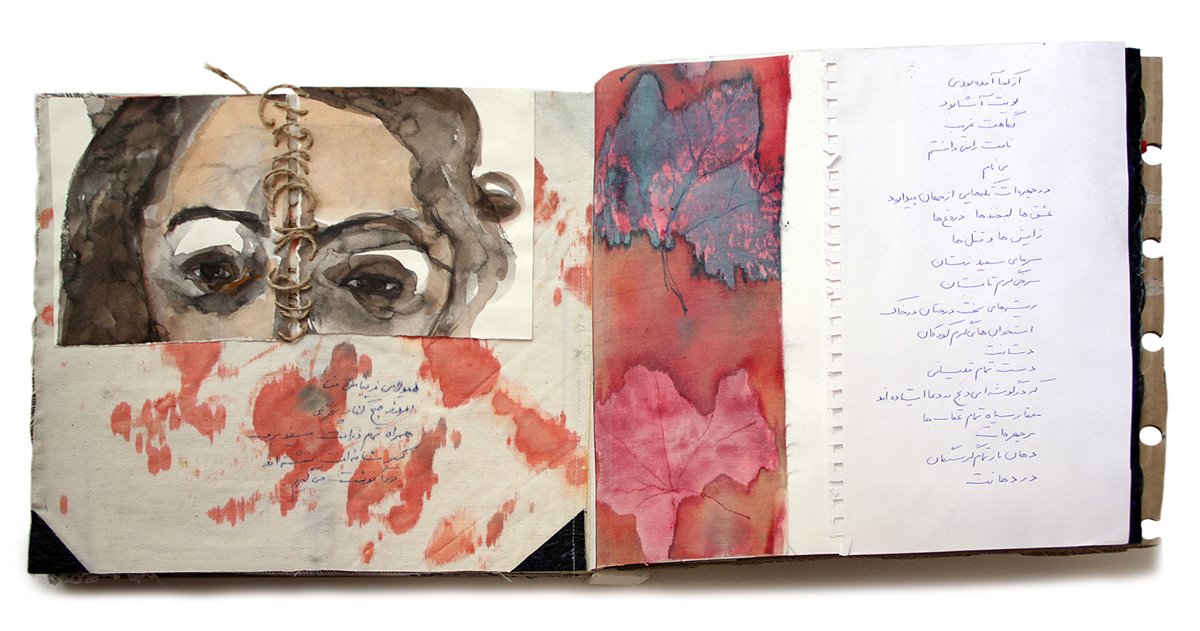 Shideh Tami, Poetry In Painting, 2018
Shideh Tami, Poetry In Painting, 2018
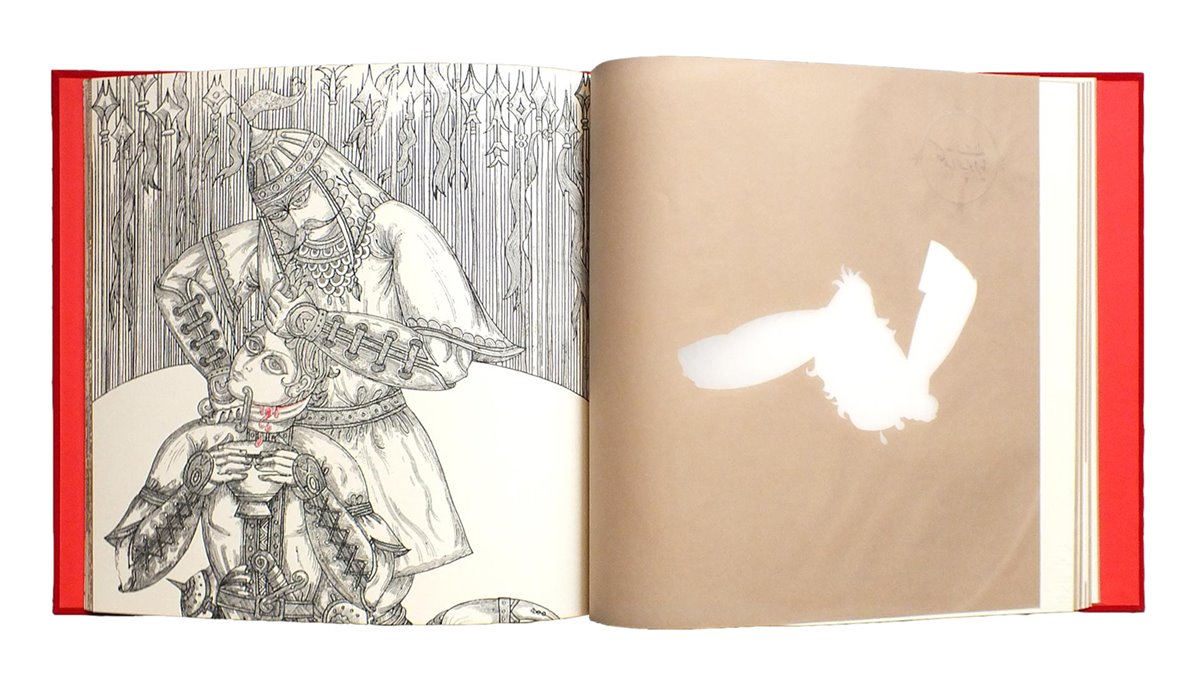 Ali Akbar Sadeghi, Ashegh Nameh (Love book), 2016
Ali Akbar Sadeghi, Ashegh Nameh (Love book), 2016
In recent years, with the emergence of new technologies, the function of the book for giving information has been downplayed and it is one of the factors in rethinking the physical/traditional form of the book as an art medium. Artist handbook usually presented in bound or portfolio format. Different features of artist handbooks make the artists rethink about this medium as a blank canvas, features such as the physical structure of the book, the possibility of printing limited editions or just one edition, historical interrelations of the book with illustrating concepts, literature, poetry, and philosophy.
The origins of how artist handbooks came to being in Iran, should be sought in early endeavors in literary format. First instances of artist handbooks in Iran are Great-grandchildren of Grandfather Adam by Bahman Forsi published in limited editions and Wretchedness and Those in Chain by Amir Gol Ara in the early 1960s. These two books were self-published in a collection called 'Art and Book', they were printed in limited copies and were classified as artist handbook in terms of their designing. Wretchedness was published in October 1960. It was covered with old burlaps, its pages were made to look ancient, and it was hand-written and contained strikeouts, it looked like a manuscript and many assumed that they had received a real diary. Those in Chain was a literary artist handbook, which was published in different formats, this was also hand-written and some new compositions were made by relocating some verses and sentences in the book, as a result, it looked like a book by surrealist poets.
The first edition of By the Pen by Jalal Al-e Ahmad was self-published in 500 copies in 1960; this artist handbook was the result of the collaboration of the author and the artist, Bahman Mohassess. He designed four covers for the book and these illustrations were published on lino-cutting techniques, some copies of these illustrations were bound in every book.
It can be said that Quran illustrated by Hossein Zenderoudi is the first artist handbook by a visual artist in Iran. This book was published in 1970 by Club du livre, Paris. This collection contains Jean Grosjean’s French translation of the Quran and a study by the French Islamic scholar and sociologist, Jacques Berque and it features 42 illustrations by Charles Hossein Zenderoudi in two different boxsets. Another boxset includes a facsimile redesigning of the well-known manuscript of the Quran by Ibn Bawwab and a booklet of commentary on the manuscript by D. S. Rice. 373 of the sets include a box of serigraphs by Charles Hossein Zenderoudi and a Swiss designer, Adrian Frutiger. A box contains 20 signed screen-prints, 13 mono-color unsigned screen-prints and two sets of 2-sheet showing the process for creating a unique work. In addition, 7 unsigned screen-prints of the Frutiger-designed symbols are included in the box.
Ardeshir Mohasses designed many books and catalogs due to his workaholic nature and created a new narrative in their structures; and in doing so, he chose the book as a raw material for his art instinctively. Examples of this are his sketchbooks which have a single subject, catalogs over which he illustrated and some copies of the book Tashrifat which were numbered and illustrated.
Mohammad Saleh Ala published one of the most unique artist handbooks in the early 1980s, called Everything Men Know About Women by an imaginary author named Abdol Smith and translated it under his own name. This book which looked like any popular self-help book was, in fact, a set of blank paper sheets. However, Shahrokh Ghiasi and Shideh Tami were among the first visual artists that chose the book as art medium deliberately. In the 1980s, Ghiasi chose second-hand copies of translated books and used books of administrative and accounting departments as the raw material to illustrate on their pages. Shideh Tami who is a poet, as well as an illustrator, turns her poems into a book alongside paintings, illustrations, collage with cardboard, paper, film, and fabric. Her first book collection was published in 2004 and after that, she still works with the book as experimental material. Monir Farmanfarmaian also had an experience in this field, a copy of her book is preserved at Monir Museum of Negarestan Park Garden. Bridge Book by Siah Armajani was published in 300 copies in 1991 in collaboration with Walker Art Center and Minnesota Center for Book Arts using woodblock prints, this book contains all the bridges designed by Armajani in the past years.
Tehran Museum of Contemporary Art held two exhibitions under the title of Books by Contemporary Artists on October 22nd and December 10th, 1977 in gallery number 1 and 4 of the museum displaying numerous works of artist handbooks by artists such as Dither Roth, Andy Warhol, etc.
Nowadays, a lot of attention is paid toward artist handbooks in contemporary art of Iran and many artists are active in this area that their works should be studied carefully and in-depth. In the 2010s, some projects inside Iran were started to professionally produce artist handbooks, such as Abbookness, Kav project, 009821 projects and Rezvan projects in every one of which modern and contemporary artists have been collaborating.
Ali Bakhtiari
is a Tehran based curator focused on cultural studies and modern and contemporary art. He collaborated with many international museums and centers such as Tehran Museum of Contemporary Art, British Museum, Museo MAXXI and Centre Georges Pompidou. He founded ABBookness project in 2011 which is the first Middle Eastern project collaborating with artist on publication of Artist Books. ABBookness already publishe d works of artists such as Farideh Lashai, Parviz Tanavoli, Parvaneh Etemadi and Ali Akbar Sadeghi.
alibakhtiari85@gmail.com
Column
And What Was In Its Own Possession*
Alireza Mostafazadeh Ebrahimi
> more
Opinion - I
Five Main Forms of Design in Narrative Storytelling
Mohammad Hasan Shahsavari
> more
Opinion - II
Shape of Imagination; An Interaction between Image and Imagination
Yourik Karimmasihi
> more
Opinion - III
Inside a Poem
Roshanak Keyghobadi
> more
Design Today
The Not-So-Subtle Art Of Book Cover Design
Sarah Snaith
> more
Face To Face - I
Broken Promises; Face To Face With Jennifer Sterling
Majid Abbasi
> more
Face To Face - II
Literature, Performance And Design; Face To Face With Warren Lehrer
Steven Heller
> more
Reference - I
The Visual Lyrism Of Apollinaire
Vanina Pinter
> more
Reference - II
Christian Chruxin: Master Of The Serial
Jens Mueller
> more
Reference - III
Across Disciplines: Literature And Graphic Design
Aysegül Izer
> more
Archive - I
The Book Of Books; The Many Fates And Faces Of Livre D’artiste.
Olga Severina
> more
Archive - II
Verbo-Visual Pyrotechnics! An Overview Of Concrete Poetry
Foad Farahani
> more
Archive - III
Daily Practice; On the Virtue of Beholding
Yourik Karimmasihi
> more
Archive - IV
Scrap Paper Poetry
Aria Kasaei
> more
Different
Haghighi’s Typefaces
Borna Izadpanah
> more
Gallery
My House is Cloudy; Farshid Mesghali’s illustrations for Nima Yushij’s poems
Ali Bakhtiari
> more